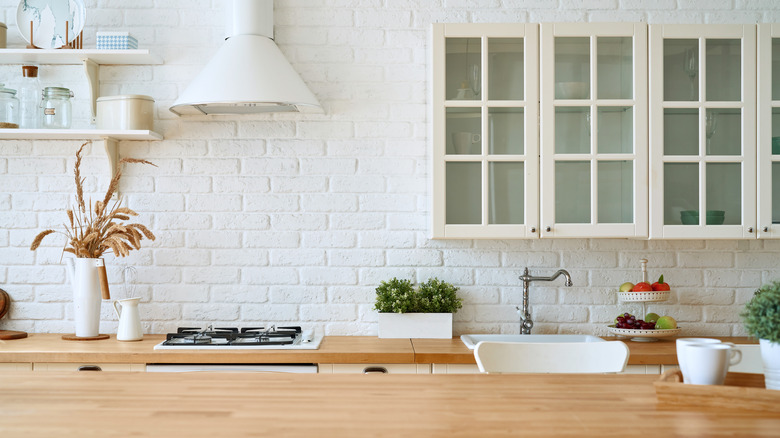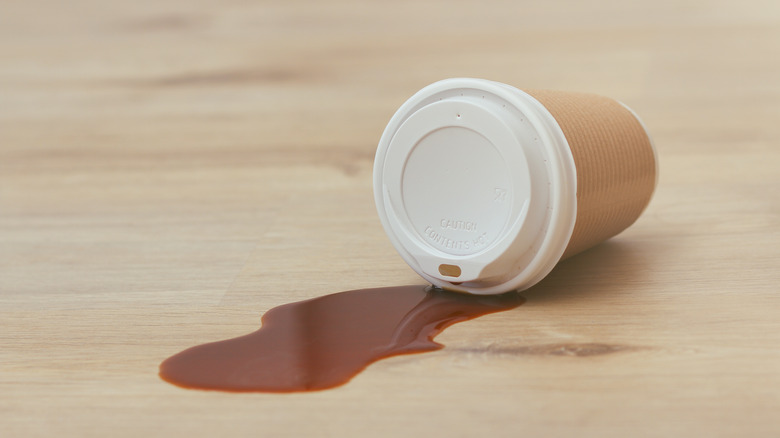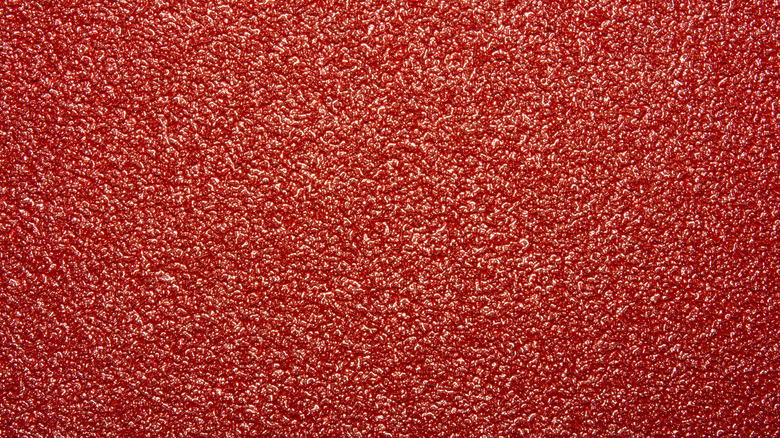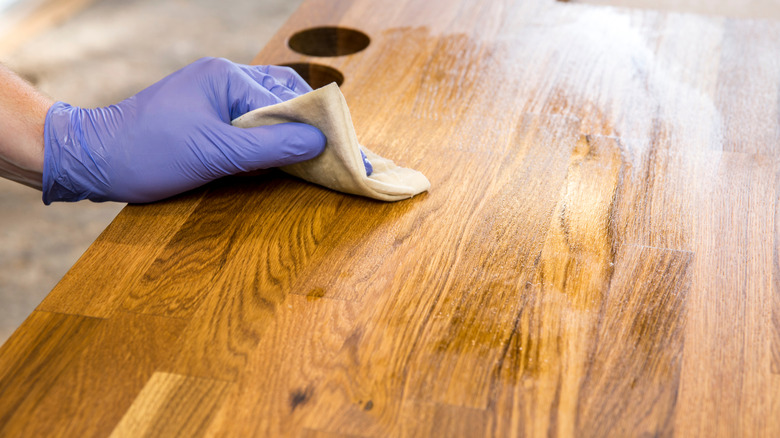3 Simple Ways To Protect Your Wood Countertops
Wood countertops are a more maintenance-intensive alternative to granite, marble, or quartz. They require more attention, including routine cleaning, disinfecting, and sealing, and are more easily damaged. However, there are simple ways to protect them, and the extra effort is worthwhile. Repairing scratches, preventing stains, and maintaining the surface are essential elements of prolonging the life and maintaining the natural beauty of your wooden countertop.
Not all wood can withstand typical kitchen abuse. However, according to Advantage Lumber, certain types score highly on the janka hardness scale, which measures wood resistance, making them ideal for countertops. Birch, cherry, maple, walnut, and oak are some that are frequently used. Wood counters are environmentally friendly, can be constructed from reclaimed wood, and derived from sustainable sources, per Countertop Advisor. If you protect them from normal wear and tear, and don't ignore the inevitable spills, stains, and scratches, your wood countertop can last at least 60 years, asserts How To Look At A House. Aim for regular cleaning, brushing, and sanding, sealing pores in the wood and paying timely attention to problems.
Fighting stains and effects of humidity
Stains and spills both need to be dealt with as soon as possible. Coffee, tea, red wine, and other colored or acidic liquids will discolor a wood surface if not cleaned as soon as possible. A wet glass can leave an unsightly ring unless wiped up immediately. Clean and wipe a wood countertop daily with dish soap, never ammonia or bleach. Add table salt if there is a noticeable odor. Hydrogen peroxide is another effective stain remover. Kitchen and Bath Classics suggests trying a half lemon and coarse salt to scrub a stain, or using baking soda to combat a new spill.
A cast iron pan, left too long on the wood, might leave a black rust stain in its wake. Tiff Stuff advises treating it with a powdered cleaner containing oxalic acid. Spread it on the discoloration and leave it for 10 to 15 minutes. If the treated area lightens too much, darken it with mineral or tung oil to match its surroundings. Wood is vulnerable to the effects of humidity and extreme changes in weather. A wood countertop may expand and contract accordingly, and may even warp. Therefore, properly sealing a wood countertop is essential to protect it equally well from the elements.
Sanding stains and the surface
A stain or spill left untreated is likely to seep into a wood countertop. Using sandpaper is a possible solution, and Laurysen recommends starting with 120 grit coarseness for removal and then changing to 180 grit for smoothing. Sanding followed by smoothing is also a remedy for minor cracks and scratches, but you can avoid deep scratches by not using the countertop as a cutting board.
A wood countertop is, of course, vulnerable to the effects of extreme heat. Use trivets, cooking racks, silicon mats, or potholders to shield the surface from high temperatures. Fortunately, as with superficial nicks, insignificant scorch or burn marks can be sanded away. Attempt to remove them with coarse sandpaper. When no longer visible, smooth the area with a finer grit.
A paraffin stick of a matching color can be used to fill in small dings on a countertop. Use a putty knife to scrape away the excess and then sand to blend. An entire stained and slightly damaged countertop can be restored with sandpaper and mineral oil. Interior Design Info recommends following the grain when sanding, then using pure white mineral oil to finish the process.
Use oils or varnish
Adding a layer of oil or varnish to the countertop is a must to repel water, resist stains, guard against scratches and cracking, and prevent the wood from drying up, according to The Clever Homeowner. The seal also wards off mold and bacteria, adding to wood's natural antibacterial properties. A natural wood oil that is safe for foods (no flavors, odors, or toxins) is recommended by WoodKitchenCountertops.
Apply a generous amount of oil on a regular basis and follow the grain to wipe it off. Mineral or tung oils are good options, whereas vegetable-based ones can oxidize and become rancid. Linseed and coconut oils are other choices, and oil blended with paraffin or beeswax is a good water barrier. Livos United States calls for a thorough oiling twice a year in addition to regular applications. A countertop with a sink will require more frequent oil treatments due to the presence of excess water. A more permanent surface finish such as polyurethane or varnish is durable but less pleasing than oil, which penetrates the wood more deeply.



